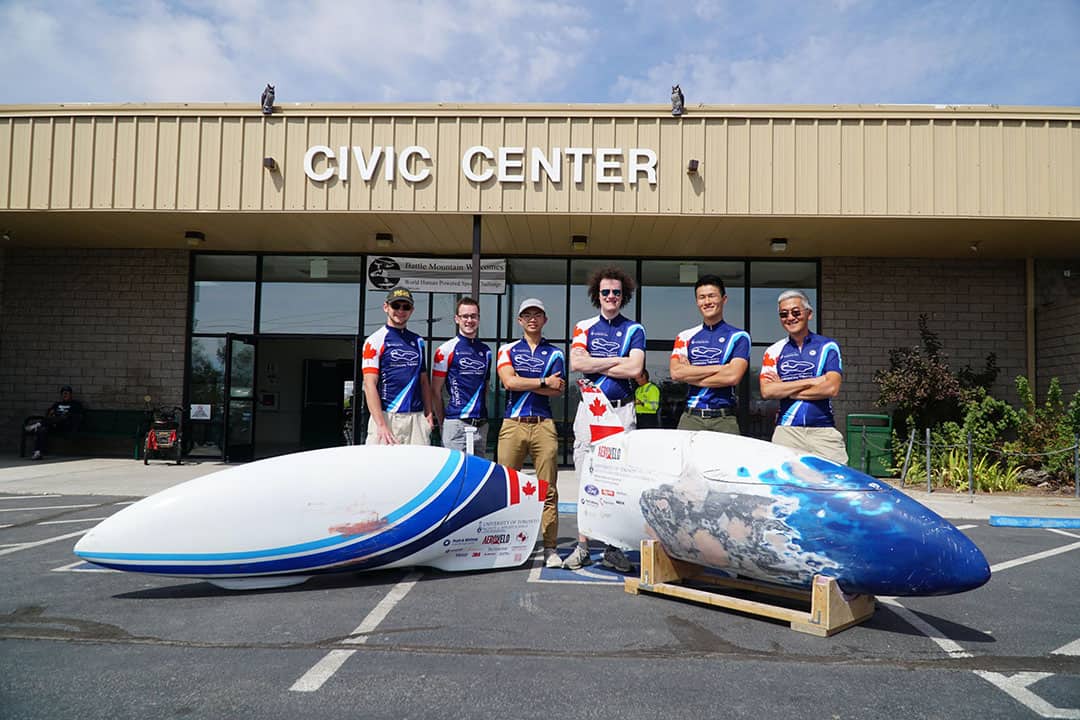Teams across the globe compete annually in the World Human Powered Speed Challenge (WHPSC) for the title of fastest human-powered vehicle. This year, U of T’s Human-Powered Vehicle Design Team (HPVDT) has once again claimed first place, marking their third consecutive win since 2015.
Their most recent project, Eta Prime, came in at an impressive 127.6 kilometers per hour. This is shy of their 2016 record set by the speedbike’s predecessor, Eta, which finished with a speed of 142.04 kilometers per hour. Eta is named after the Greek letter that represents efficiency in engineering equations.
The HPVDT was founded in 2006 by graduate students from various fields of Engineering at U of T. One of their first projects was a human-powered ornithopter. According to Calvin Moes, the team captain of HPVDT, the ornithopter was a flapping wing aircraft. It was the first of its kind to ever fly under its own power.
In late 2010, HPVDT decided to start building high-speed bicycles. Moes explained the intricacies of building record-breaking human-powered vehicles.
“The bicycles haven’t really been about anyone’s research or academics; it’s just something that we do because we think it’s cool. So we’ve been building one bike every year since 2010,” said Moes.
Common to both Eta and Eta Prime is the aerodynamic shell. Both bikes were made from the same mould, so their outer systems are nearly identical in shape.
The largest difference between the two bikes is the redesign of the internal frame. “[It] is a big carbon fibre structure that surrounds the rider and supports all the parts of the bike that need to function,” explained Moes.
Eta Prime’s internal frame is stiffer and much lighter in weight when compared to Eta. Both of these qualities are important when it comes to designing a high-speed bike.
“One of the biggest challenges is improving the aerodynamics — the whole project is all about good aerodynamic performance,” said Moes. This is necessary to achieve high speeds, which is the most important factor.
According to Moes, there are not any rules or requirements when it comes to competing in the WHPSC but to have a high-speed vehicle that is solely human-powered.
In addition to having excellent technical qualities of the bike, physical prowess — especially strength in the leg muscles — is necessary to achieve high speeds. This is because competitors are the sole ‘engines’ of the vehicles. Moes himself is the 13th fastest cyclist in history and is HPVDT’s leading male rider.
“I trained throughout the year, anywhere from 10 to 20+ hours a week… These vehicles are not as easy to ride as your typical bicycle, and they take quite a bit of practice to make [them] work,” explained Moes.
As the team gets ready for their next WHPSC, they are also exploring the possibility of building a high-speed commuter bike for practical use that is intended to reach 70 to 80 kilometres per hour.
Editor’s Note (October 3): A previous version of this article incorrectly stated that the team placed third in the competition. They placed first.


